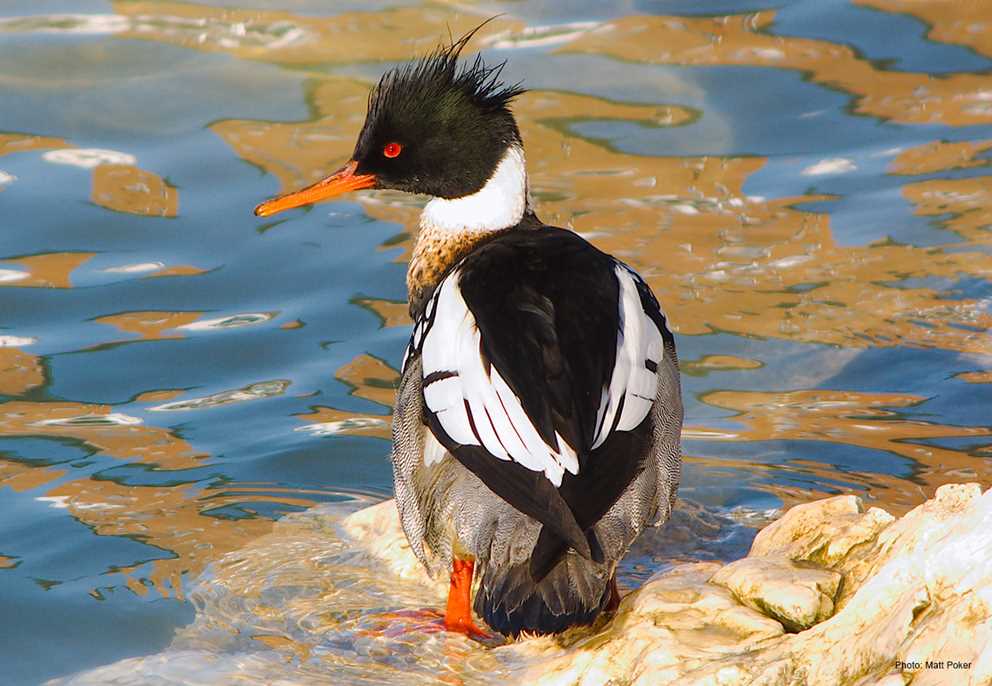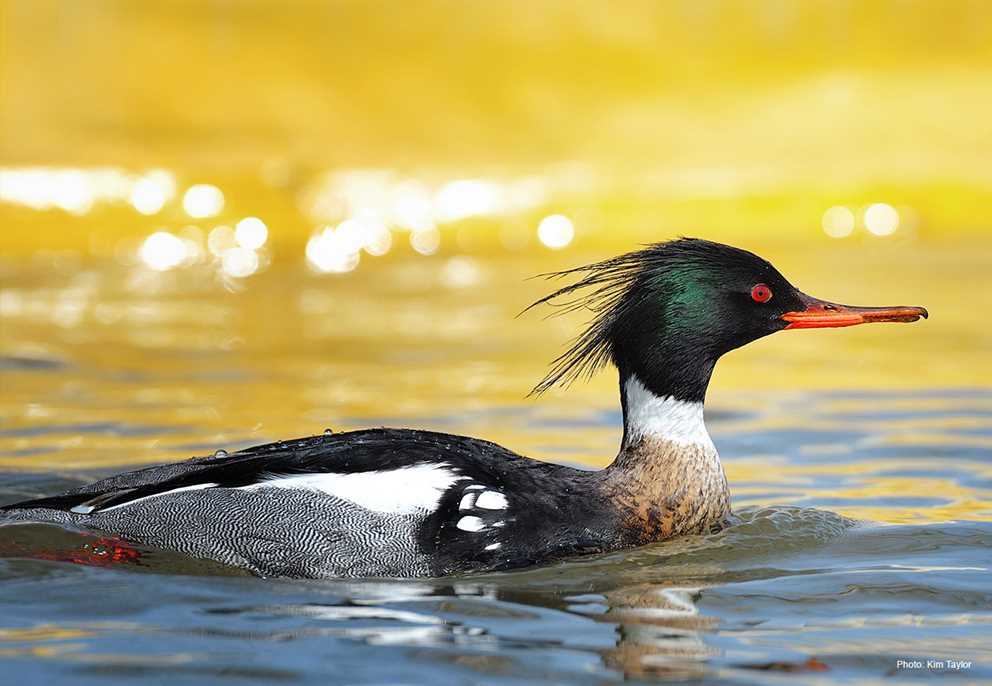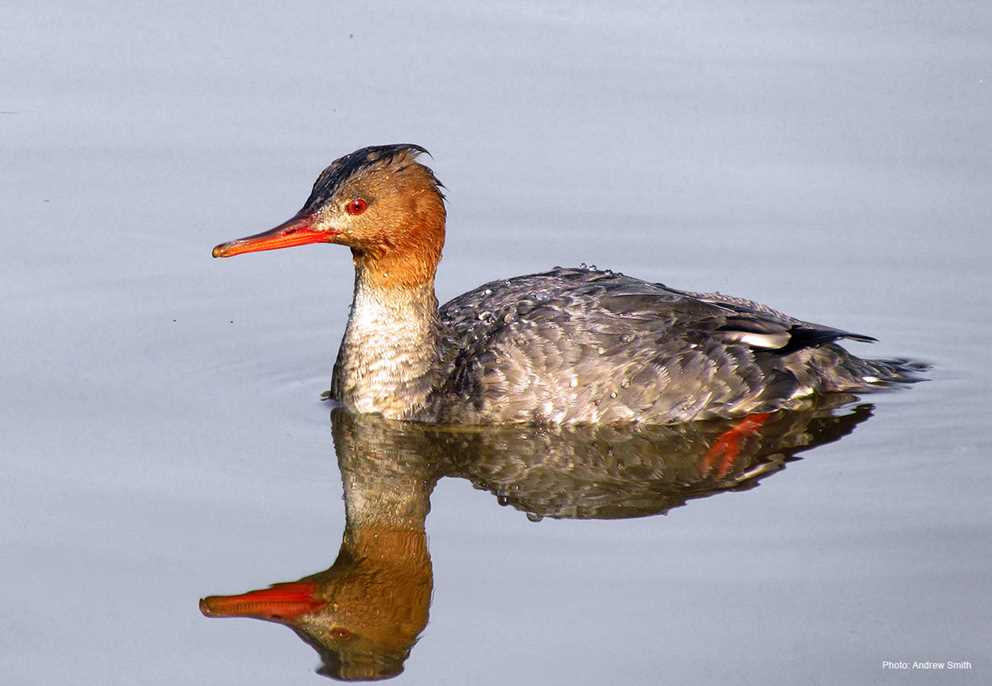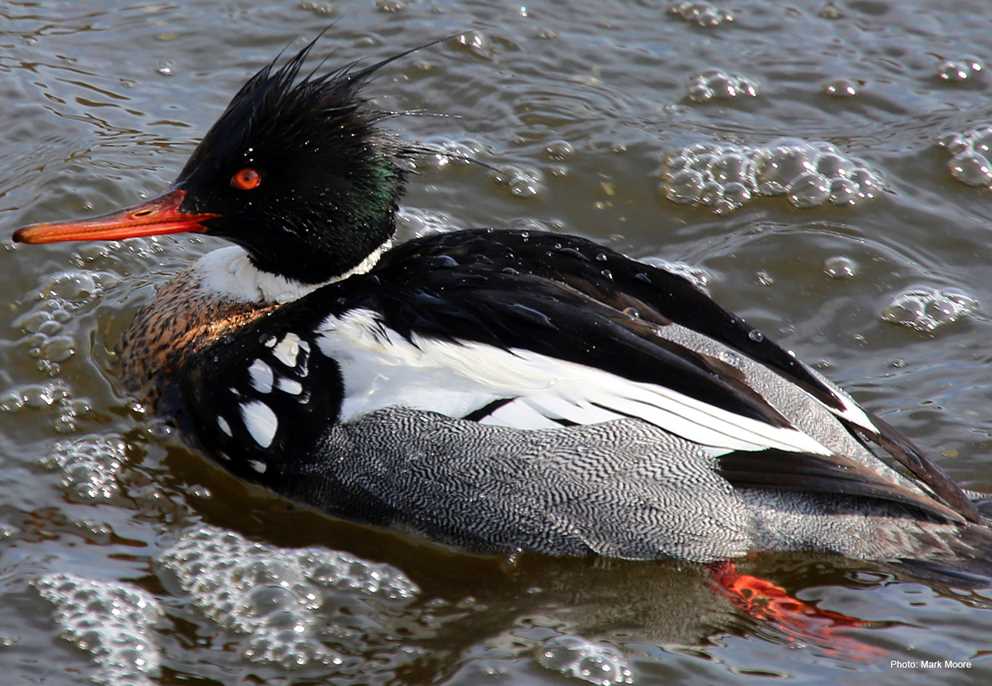Overview
Red-breasted Mergansers are a medium-sized sea duck and are the least well known of the three merganser species in North America. Their breeding range is circumpolar, and in North America includes Arctic and boreal rivers and lakes from Alaska across Canada to Newfoundland and Labrador. In eastern North America, the breeding range includes northern Minnesota, Wisconsin, Michigan, and Maine. In winter and migration, Red-breasted Mergansers are more likely to be found in brackish and saltwater areas along both coasts and the Gulf of Mexico south to Mexico.
Males have a dark, metallic green head with a double-pointed shaggy crest with a narrow red, very slightly upturned bill with a notable nail, a white neck collar above a reddish breast for which they are named, gray flanks, and white belly. Females are grayish brown overall, with a brown head, shaggy brown crest, and an orange bill, and variable white area on the chin and neck. In flight, they appear slender with a pointed profile, and the wings show substantial white on the secondary coverts and inner secondary feathers. Red-breasted Mergansers are ground nesters, sometimes in loose colonies associated with terns, gulls, or eiders.
Description
Key Identification Features
- Males have a dark, metallic green head with a double-pointed shaggy crest, and a narrow red, very slightly upturned bill with a notable nail, a white neck collar above the reddish breast for which they are named, gray flanks, and white belly.
- Females are grayish brown overall, with a brown head with an orange bill, shaggy crest, and variable white area on the chin and neck.
- In flight, they appear slender with a pointed profile, and the wings show substantial white on the secondary coverts and inner secondary feathers. Males are notably larger than females.
Male/Female Average Length and Weight
- Weight: Males 2.2–3.0 lbs.; Females 1.8–2.4 lbs.
- Wingspan: Males 9.2–10.2 in.; Females 8.2–9.4 in.
Male Identification
- Alternate (Breeding) Plumage: Males have a dark, metallic green head with a double-pointed shaggy crest, and a narrow red, very slightly upturned bill with a notable nail, a white neck collar above the reddish breast for which they are named, gray flanks, and white belly.
- Basic Plumage: Overall grayish brown with a white belly.
Female Identification
- Alternate (Breeding) Plumage: Females are grayish brown overall, with a brown head with an orange bill, shaggy crest, and variable white area on the chin and neck. The belly is creamy white.
- Basic Plumage: Overall grayish brown with a white belly.
In-flight Identification
- In flight, they appear slender with a pointed profile, with gray wings that have substantial white on the secondary coverts and inner secondary feathers.
Vocalizations
- Males have a cat-like “yeow-yeow” during courtship displays.
- Females emit a raspy “krrr” and an alarm call of “gra-gra-graaak”.
Similar Species
- Common Mergansers: May be confused with the Common Mergansers, but Red-breasted Mergansers have a notable double pointed crest on the head, a reddish breast, gray sides, and red iris, whereas the male Common Merganser has no crest, creamy white breast and sides, and a brown iris. Female Red-breasted Mergansers have a variable white chin and throat whereas female Common Mergansers have a distinct, clean white patch on the chin. Red-breasted Mergansers have a slightly upward curved bill, whereas Common Merganser bills are straighter, and have a heavier appearance. While not completely dependable, in winter and migration of Red-breasted Mergansers are far more frequently associated with brackish and salt water coastal areas, while Common Mergansers are more frequently associated with inland freshwater.
Habitat Preferences
- Breeding: Red-breasted Mergansers are typically found in tundra or boreal freshwater to brackish lakes and rivers.
- Migration and Winter: During migration and in their wintering areas they are most frequently found in brackish or saltwater bays and estuaries along both coasts and in the Gulf of Mexico.
Foraging Habits and Diet
- Red-breasted Mergansers are visual predators and feed heavily on a variety of species of fish in North America.
Breeding Habits
- Monogamy: Red-breasted Mergansers are seasonally monogamous, with pair formation happening during late winter and early spring. Males leave with onset of incubation. Most females may breed at age two.
- Nest Location: Females nest on the ground, usually under overhead cover of shrubs, trees, logs, and driftwood, near water. They add down and grass or leaf litter to nests as incubation proceeds.
- Clutch Size: 9 to 10 eggs. Females may also lay in nests of other females, resulting in abnormally larger clutch sizes up to 25 eggs. The eggs are elliptical to elongate oval, beige to gray, and are 2.5 by 1.8 in. The incubation period is 30 to 31 days. They are not known to renest unless nest loss occurs during laying.
Migration and Distribution
- Fall Migration: In fall, they depart in September, with peak migration in October.
- Spring Migration: Spring migration is from March to May, with some individuals lingering far south until June. Arrival at breeding areas is usually in May.
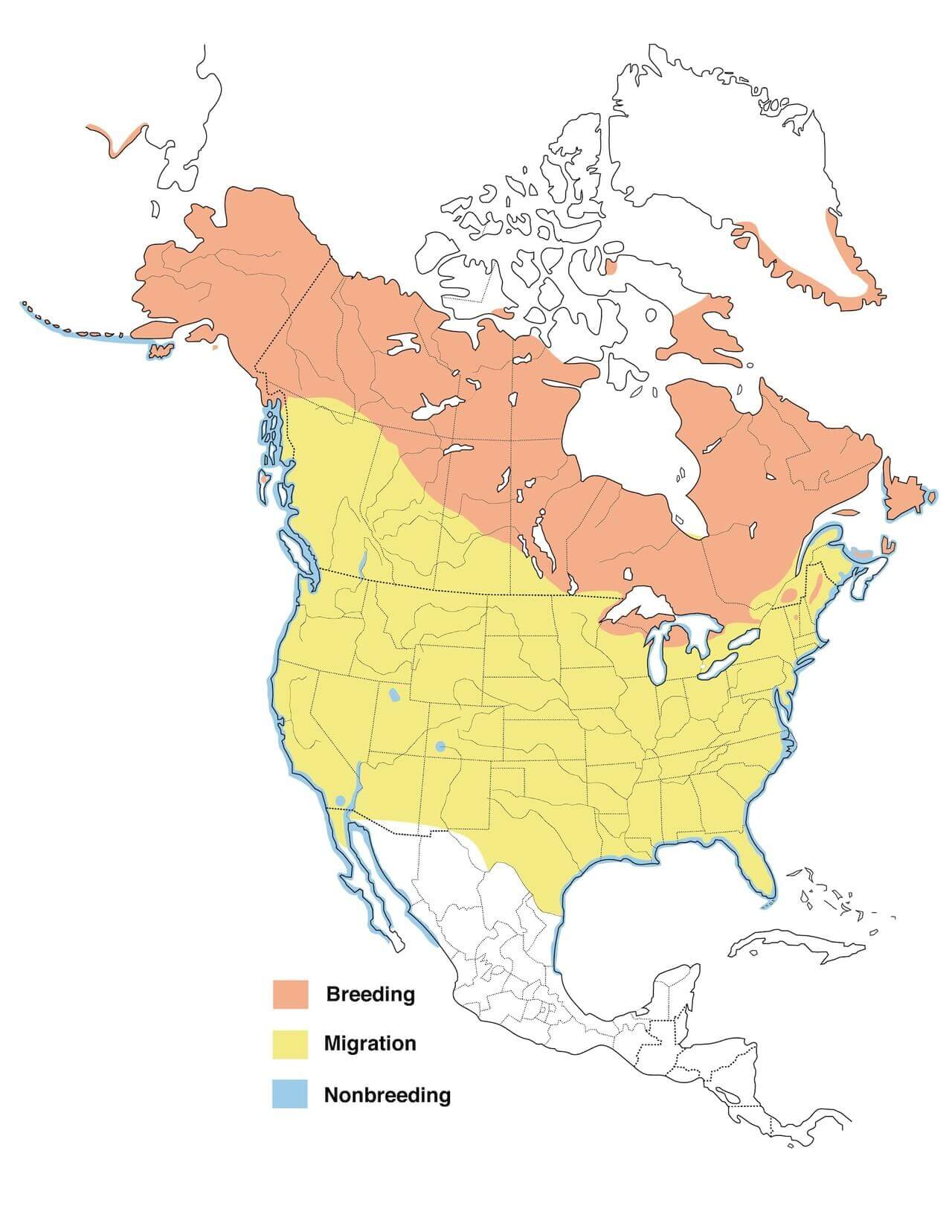
Conservation Status
- IUCN Status: Least Concern
- Population Status: The North American population estimate is roughly estimated at 250,000 birds. Limited data suggests that the population is stable.
- Conservation Concerns: Habitat degradation in the form of water pollution, sea-level rise, sedimentation, and human alterations including dam construction are challenges for this species. Like other diving ducks, mortality from abandoned fishing nets and lines are a concern.
- Conservation Focus: Maintaining the integrity of breeding habitats and careful use of fishing gear will support populations.
Harvest Information
Harvest estimates are not readily available for Common and Red-breasted Mergansers separately. The following statistics are based on data from 1999 to 2008.
- An average of 14,376 Red-breasted Mergansers were harvested annually across the US from 1999 to 2008.
- Red-breasted Merganser harvest is highest in the Atlantic Flyway, accounting for 66 of the total US harvest followed by the Mississippi Flyway at 21 percent and the Pacific Flyway at 9 percent.
